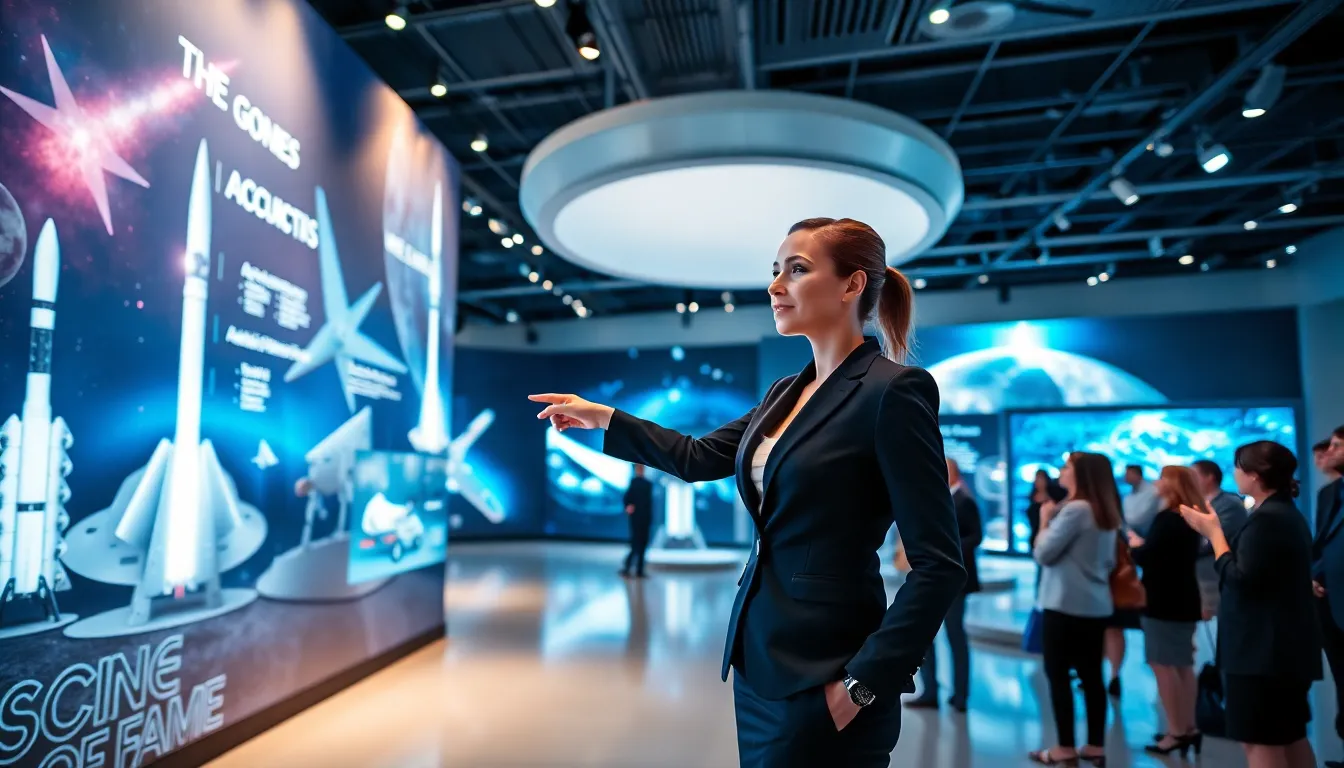In a universe where training for space travel could feel like a game of cosmic hopscotch, augmented reality (AR) is the secret sauce that’s taking astronaut preparation to a whole new orbit. Imagine strapping on a headset and suddenly finding yourself floating in zero gravity, dodging asteroids while learning how to fix a satellite. It’s not just science fiction; it’s the future of astronaut training.
Table of Contents
ToggleOverview of Augmented Reality
Augmented reality (AR) integrates digital information with the physical world, enhancing how individuals interact with their environment. In astronaut training, AR enhances realism and engagement, enabling trainees to practice in environments similar to space.
Definition of Augmented Reality
Augmented reality refers to technology that overlays computer-generated images or information onto the real world. This technology alters a user’s perception of reality by blending virtual elements with physical surroundings. Applications of AR can include interactive simulations and visual enhancements, which provide users with real-time 3D modeling and contextual information.
Applications in Various Fields
Augmented reality finds applications across diverse fields such as education, healthcare, and entertainment. In education, AR enhances learning experiences by visualizing complex concepts. Healthcare professionals utilize AR for surgical simulations, improving training through lifelike procedures. In entertainment, AR transforms gaming by creating immersive environments, ensuring players engage more deeply. Industries increasingly leverage AR, recognizing its potential to improve training and operational efficiency.
Augmented Reality in Astronaut Training
Augmented reality (AR) significantly transforms astronaut training by providing immersive simulations and practical learning experiences. Trainees engage in realistic scenarios that effectively prepare them for the challenges of space missions.
Benefits of Using Augmented Reality
Enhanced realism facilitates skill development in real-time environments. Trainees become proficient in satellite repairs, emergency procedures, and navigation while floating in zero gravity scenarios. Increased engagement motivates learners, thus improving retention of knowledge and skills. Cost reduction occurs as AR minimizes the need for physical training facilities or equipment. Flexibility allows training to occur anywhere, eliminating location constraints.
Challenges and Limitations
Technical difficulties can hinder the effectiveness of AR training. Software glitches, hardware malfunctions, and inadequate testing may disrupt simulations. Additionally, reliance on technology creates concerns about potential failures during critical missions. High development costs for AR programs can limit accessibility for some training programs. Lastly, limited research exists on long-term training outcomes, raising questions about the sustained effectiveness of AR in skill retention.
Case Studies in Astronaut Training Programs
Augmented reality (AR) has transformed astronaut training programs through various implementations. Notably, NASA has harnessed AR to elevate the training experience for astronauts.
NASA’s Implementation
NASA’s AR initiatives involve immersive simulations that mimic space environments. Trainees engage in real-time problem-solving scenarios, such as conducting maintenance on spacecraft systems. With special AR glasses, they visualize data overlays, enhancing situational awareness during training. These tools foster collaboration and effective communication, crucial for mission success. Additionally, the AR applications significantly reduce the costs associated with traditional training methods, making advanced training more accessible.
International Contributions
Other space agencies also contribute to AR advancements in astronaut training. The European Space Agency has integrated AR into their training modules, enabling astronauts to practice extravehicular activities in realistic settings. These programs utilize advanced AR technology to simulate the lunar surface, allowing astronauts to rehearse tasks they may perform on missions. Japan’s space agency, JAXA, employs AR for robotic operations training, enhancing astronauts’ skills in controlling robotic arms and systems in real-time. These global efforts showcase the collaborative nature of AR development in space exploration.
Future of Augmented Reality in Training
The future of augmented reality in astronaut training looks promising with continuous advancements in technology.
Emerging Technologies
Innovative tools enhance training programs. For instance, mixed reality combines elements of both augmented and virtual realities, creating even more immersive experiences for trainees. Artificial intelligence drives personalized learning, adapting scenarios to individual skill levels. Wearable devices also supplement training, allowing for real-time performance feedback. Enhanced sensors improve environmental interaction, making simulations more realistic. Companies are exploring haptic feedback technology, providing tactile responses during training exercises. Integration of these technologies ensures a more effective training approach, equipping astronauts with critical skills for space missions.
Predictions for the Next Decade
In the coming decade, expectations for augmented reality evolve dramatically. Enhanced realism will create hyper-accurate simulations that mimic real space conditions. Cost reductions from technological advancements will make AR tools more accessible to various space programs worldwide. Collaborative training across countries may become common, fostering international partnerships among space agencies. Improvement in data analytics will lead to more effective assessment of trainees’ performance. Global interest in space exploration is likely to spark increased investments in AR research and development. Overall, AR’s integration into astronaut training programs strengthens readiness for future challenges in space exploration.
Conclusion
Augmented reality is transforming astronaut training by providing immersive experiences that enhance skill development and engagement. As technology continues to evolve, the integration of AR will likely lead to more realistic simulations and personalized learning opportunities. This innovative approach not only prepares astronauts for the complexities of space missions but also sets a precedent for other industries to adopt similar training methodologies. The commitment to advancing AR in astronaut training reflects a broader trend toward leveraging technology to enhance preparedness and operational efficiency. With ongoing research and investment, the future of astronaut training looks brighter than ever.






